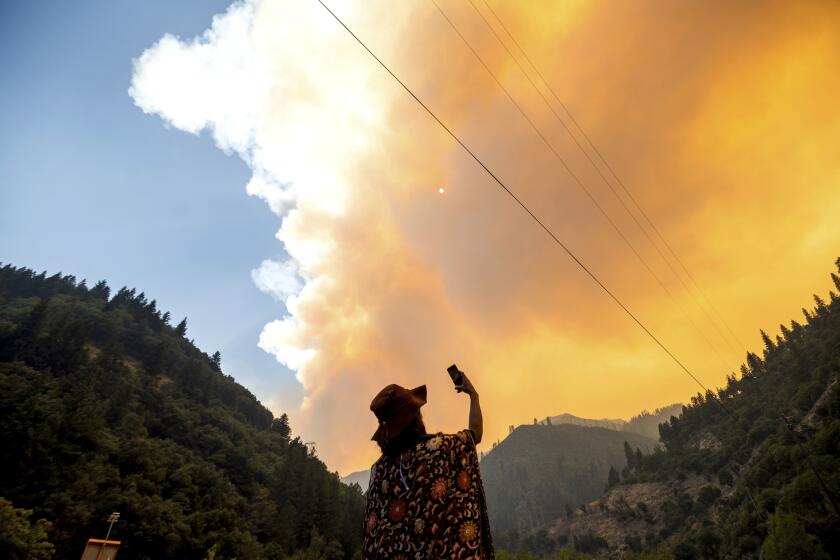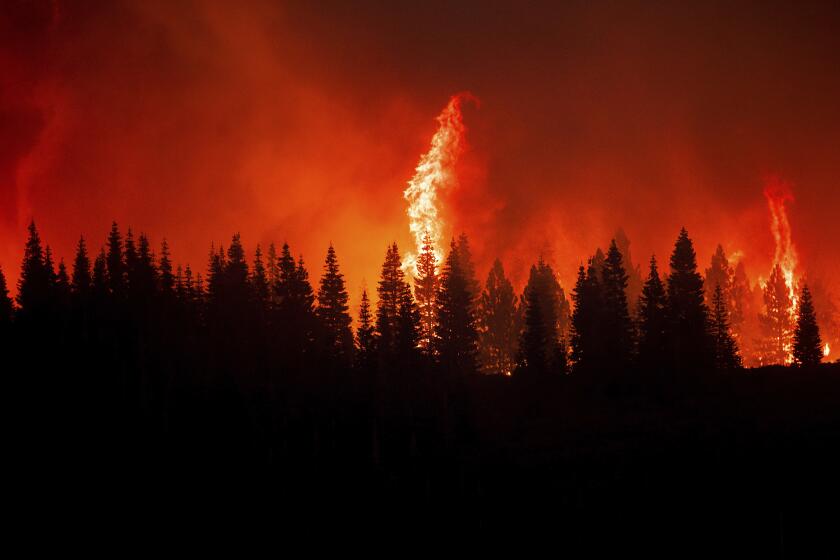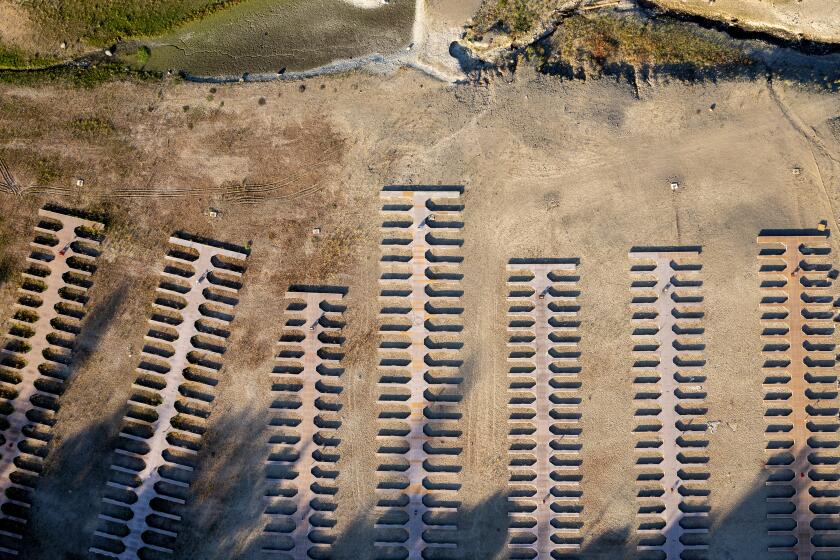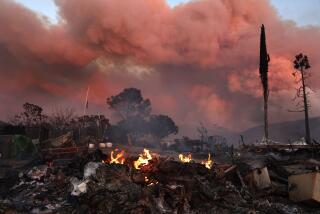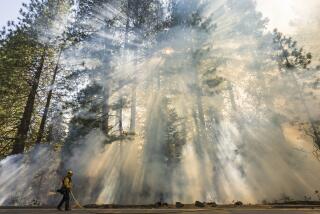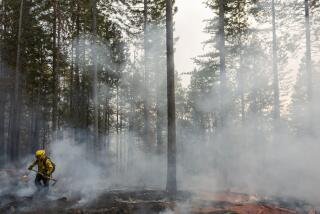Northern California fire explodes, burns structures amid heat, dry conditions
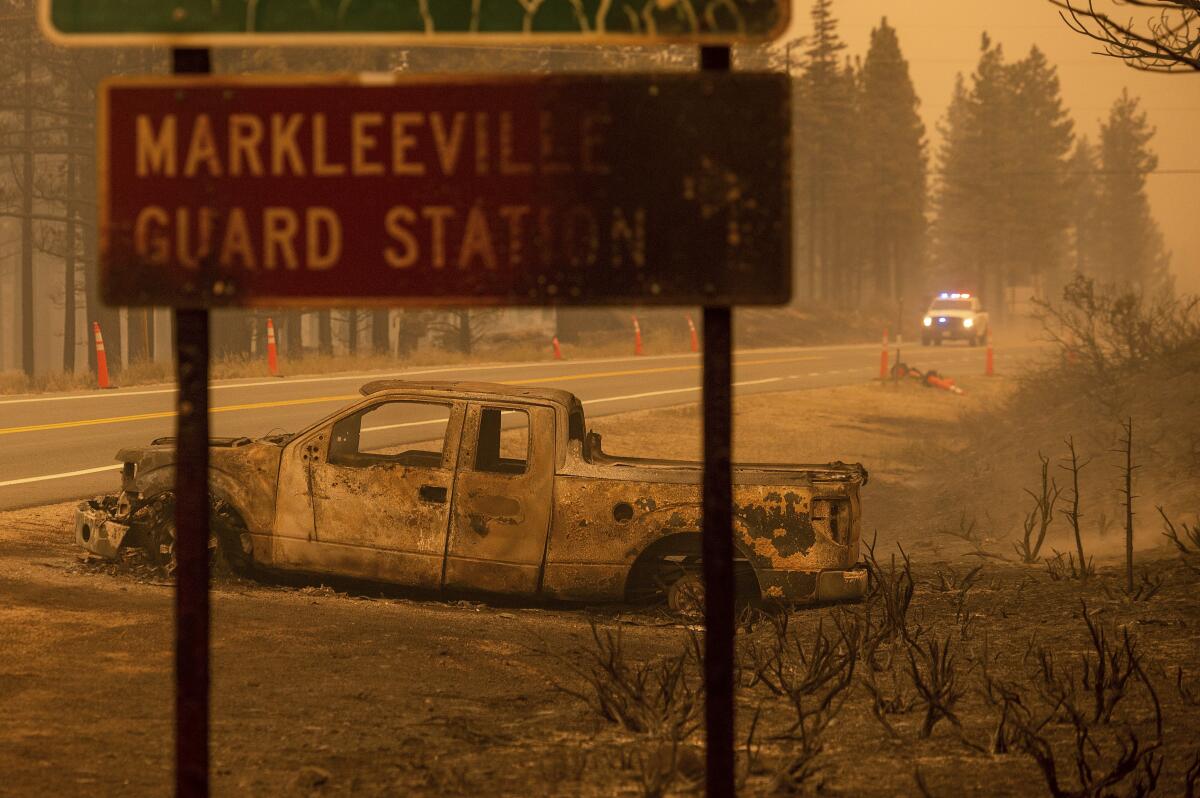
One of the state’s largest wildfires has taken a turn toward destruction.
The Dixie fire, burning in Butte and Plumas counties, has grown to 85,479 acres with 15% containment, the California Department of Forestry and Fire Protection said Wednesday — and burned at least two structures.
It is the first time the fire has destroyed structures since its July 14 ignition.
Cal Fire did not provide details about what types of structures were felled by the flames. At least 800 other buildings are threatened, the agency said.
Officials said the blaze was moving away from the town of Paradise, which was ravaged by the 2018 Camp fire, and toward Lake Almanor, where there are additional homes and cabins.
Evacuation orders have been issued for the Lake Almanor West Shore, including Canyon Dam and Prattville. Previously issued evacuation orders spurred by the fire remain in place, the Butte County Sheriff’s Office said Wednesday.
Evacuation warnings have also been issued for the Chester and Lake Almanor Peninsula, including the greater Chester area, Hamilton Branch, Lake Almanor Peninsula and East Shore, the Plumas County Sheriff’s Office said.
The Dixie and Tamarack fires have chewed through nearly 100,000 acres with little containment, officials said Tuesday.
The Dixie fire has grown with such velocity that it has created its own weather, including a massive pyrocumulonimbus cloud that generated its own lightning. During an incident update Tuesday evening, Cal Fire operations chief Tony Brownell said the fire remains highly active amid the bone-dry landscape.
“The fuel component right now is so dry, so almost 100% of the sparks going out find a receptive fuel and are lighting up,” he said. “That’s indicative of our continuous drought.”
More than 1,000 additional personnel arrived Wednesday to help fight the flames, said Rick Carhart, a spokesman for Cal Fire’s Butte County unit. The additions bring the size of the crew to more than 3,300. Officials hope the bolstered numbers will help turn the tide against the stubborn fire.
“We’re sort of flooding the area with firefighters,” Carhart said. “It’s really going to help to be able to get more done and to be able to cover a bigger area.”
Carhart said crews are still dealing with gusty wind conditions, which are creating extreme fire behavior that can force firefighters to back off.
It’s now a matter of “watching the weather and keeping that situational awareness so they can get in and get the most work done that they can,” he said.
Climate change is making the world more prone to floods like those in China and Europe and to heat waves and fires like those in the U.S. and Russia.
But California’s fatigued firefighters were also up against the growing Tamarack fire in Humboldt-Toiyabe National Forest, near the Nevada state border, and a new blaze in Yuba County that ignited Tuesday afternoon.
The Tamarack fire remained at 0% containment Wednesday morning, fire incident spokeswoman Tracy LeClair said. Crews have struggled to obtain new acreage numbers because the fire’s pyrocumulonimbus cloud and significant smoke made aerial observation difficult, but they believe it grew beyond 40,000 acres overnight.
“There’s been a lot of good work done up in here, but there’s still a lot of work to do, and there’s still a lot of potential for this fire to move around,” operations manager Pat Seekins said during an incident update Tuesday evening.
Already this year, there have been more than twice as many acres burned than during the same period last year — and hundreds more fires.
An estimated 800 homes are now threatened by the fire, LeClair said, noting that crews were prioritizing the blaze’s north and eastern perimeters in an attempt to keep flames from crossing highways.
But on Wednesday morning, video showed the fire appearing to jump Highway 89.
In response to the swelling flames, the Douglas County Sheriff’s Office in Nevada issued voluntary evacuations for the Leviathan and Holbrook Junction areas. On the California side, the Markleeville, Woodford and Mesa Vista areas remain under mandatory evacuation orders, officials said.
The California Department of Transportation also closed State Highway 88 from Picketts Junction to the Nevada state line because of the fire.
A smoke specialist has been brought in to assist with air quality monitoring, LeClair said, which continues to hover in the unhealthy range in Markleeville and nearby areas.
Smoke plumes from the Western blazes have grown so strong that they are now delivering haze as far as the East Coast.
Lake Oroville, Folsom Lake and Trinity Lake provide a glimpse into the state’s dry spell.
Meanwhile, in nearby Yuba County, the Frenchtown fire ignited around 4:30 p.m. Tuesday near Frenchtown Dobbins Road and Seward Lane, Cal Fire officials said.
It grew to about 70 acres and ignited a 20-acre spot fire nearby, and crews worked overnight to extinguish the flames.
By Wednesday morning, the Frenchtown fire was 75% contained, Cal Fire said, and forward progress had been stopped.
“The incident commander saw the potential for this fire as soon as we got the spot,” said Mary Eldridge, a spokeswoman for Cal Fire’s Nevada-Yuba-Placer unit, noting that local teams moved in immediately and were able to prevent a massive spread.
“They did a lot of work overnight, and they were able to really put a good stop to it,” she said.
Despite the progress, at least one structure was damaged during the fire’s run, Eldridge said.
In Kern County, the Peak fire had burned about 1,750 acres of grass and brush after igniting around noon Tuesday near the community of Havilah, about 40 miles northeast of Bakersfield, officials said. The wildfire was 5% contained Wednesday afternoon, authorities reported.
The Kern County Fire Department issued evacuation warnings for the areas of Walker Basin, Skinner Flat and Claraville. It has established an evacuation site at Kern River Valley Senior Center, 6405 Lake Isabella Blvd., Lake Isabella.
Even as the smoke clears and the flames dissipate, California’s firefighters must remain on high alert: Wildfires across the state have consumed more than 273,000 acres this year, Cal Fire said, and at least five major fires remain active.
More to Read
Sign up for Essential California
The most important California stories and recommendations in your inbox every morning.
You may occasionally receive promotional content from the Los Angeles Times.
